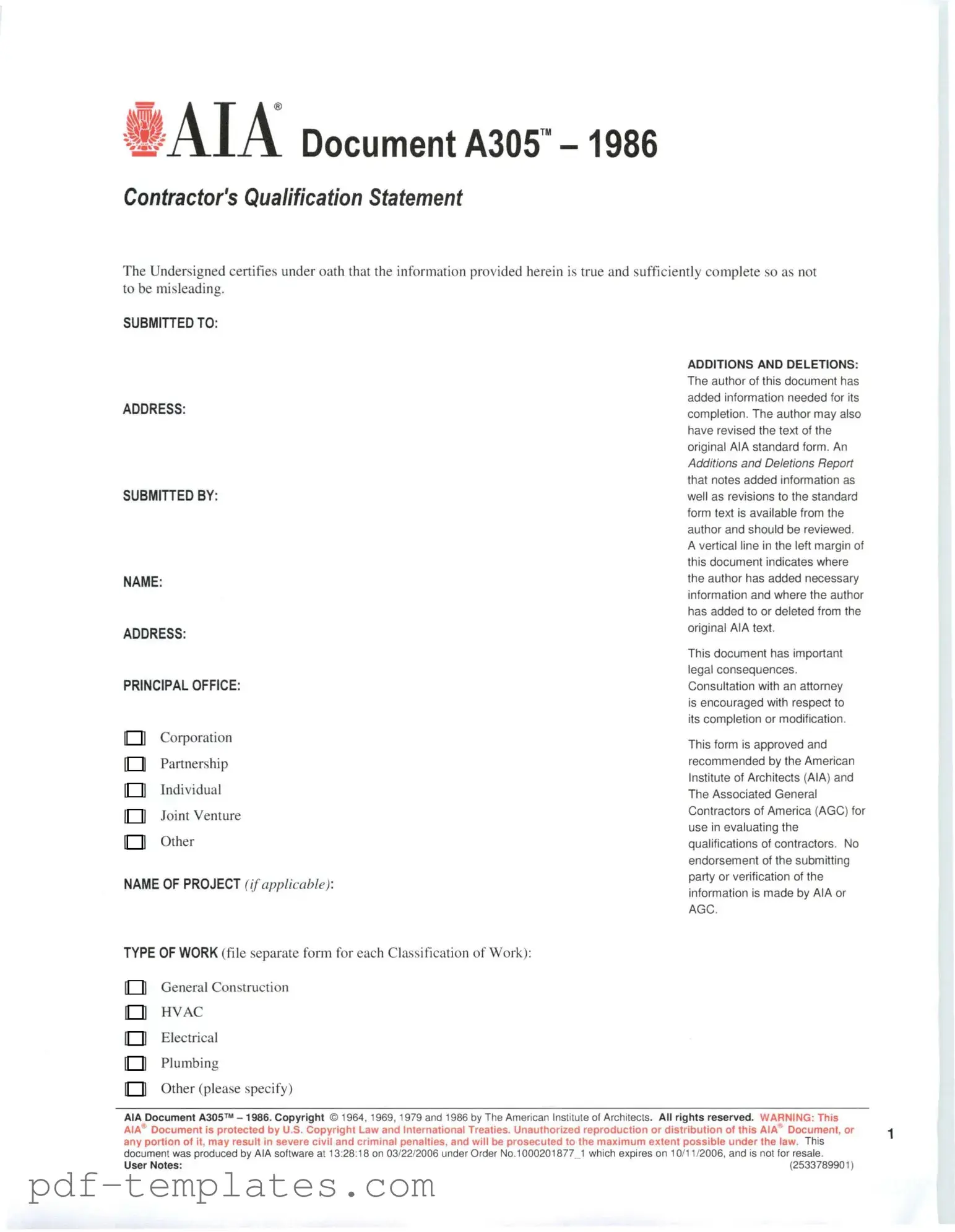The AIA A305 form, known as the Contractor's Qualification Statement, serves as a crucial tool for assessing a contractor's qualifications and financial stability. Similar to the AIA A305, the AIA A201 form outlines general conditions of the contract for construction. While the A305 focuses on the contractor's qualifications, the A201 details the responsibilities and rights of all parties involved in a construction project. Both documents ensure that stakeholders have a clear understanding of their obligations, thereby facilitating smoother project execution.
When dealing with the complexities of construction documentation, it's essential to have reliable resources at your disposal. The California Notary Acknowledgement form is among those critical documents that ensure authenticity and trust in legal signatures. By confirming the signer’s identity and intention, the Notary Public plays an essential role in the process. To assist further in understanding various legal forms, you can explore All California Forms, which provide a comprehensive overview of notary-related documents necessary for effective legal compliance.
Another document comparable to the AIA A305 is the AIA A310, which is a Bid Bond form. The A310 ensures that a contractor will enter into a contract if awarded the project. While the A305 assesses the contractor’s qualifications, the A310 serves as a financial guarantee that the contractor is serious about their bid. Both forms play a vital role in the bidding process, providing assurance to project owners about the reliability of contractors.
The AIA G702, Application and Certificate for Payment, also shares similarities with the AIA A305. While the A305 evaluates qualifications, the G702 is used to request payment for work completed. Both documents require detailed information about the contractor's performance and financial status. They ensure that the contractor has the capability to fulfill their obligations, whether in terms of qualifications or financial liquidity.
The AIA A295 form, which outlines general conditions for design-build contracts, is another document akin to the A305. Both forms focus on establishing standards and expectations. The A295 emphasizes the relationship between design and construction, while the A305 centers on the contractor's qualifications. Each document plays a critical role in ensuring that all parties understand their roles and responsibilities in the project.
In addition, the AIA A401 form, the Standard Form of Agreement Between Contractor and Subcontractor, bears resemblance to the A305. This agreement sets forth the terms between contractors and their subcontractors, ensuring that all parties are qualified and capable of fulfilling their roles. Similar to the A305, the A401 emphasizes the importance of qualifications, thereby helping to establish a reliable project team.
The AIA G703, Continuation Sheet, is also similar to the AIA A305 in that it provides additional detail regarding payment applications. While the A305 assesses a contractor's qualifications, the G703 expands on the financial aspects of a project. Both documents require comprehensive information that supports the contractor's ability to perform, reinforcing the importance of transparency in the construction process.
Finally, the AIA A104 form, which is a standard form of agreement for a project with a stipulated sum, complements the A305 by detailing the contractual relationship between the owner and contractor. While the A305 focuses on the contractor's qualifications, the A104 outlines the terms of the agreement. Both documents are essential in establishing a clear framework for the project, ensuring that all parties understand their commitments and expectations.
